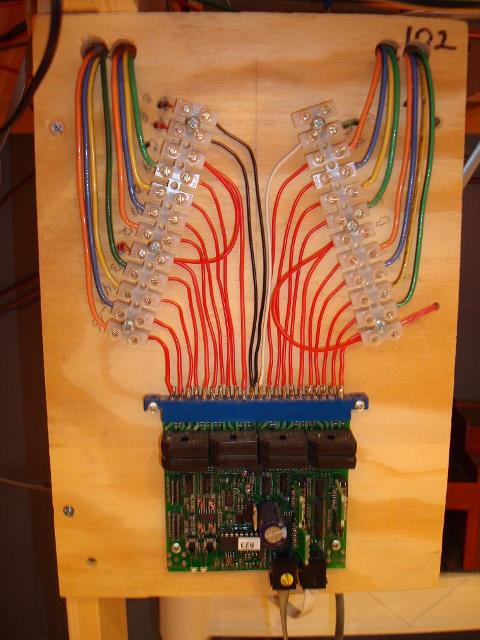
2. BDL168 Block Detector Wiring
|
This photo shows a BDL168 installation. The screw terminals were bought at Lowe's. The upper left two wires are from the power supply buss. The upper right wire is from the common buss of the Booster. The curved red wires in the center portion are from the Red Track terminal of the Boosters. One side is from the DCS100 and supplies Detection Zones 1 and 2. The other side is from the DB200 and supplies Detection Zones 3 and 4.
This photo is BDL168 Number 5 (board address 102) in the wiring diagram in Section I of the Home Page. It is the same as BDL168 Number 4 (board address 101). Both are fed by the DB200. It is the same as BDL168 Number 2 (address 104), except Number 2 is fed from the DCS100.
The detection sections are each bundled in groups of four #14 buss wires. After the bundle leaves the board it is joined with the appropriate Black Track terminal wire from the Booster. Therefore, there are bundles of 5 wires (track busses) that run under the tracks to which are connected the drop wires soldered to the track. These can be seen in one of the Layout Photos.
The first wire from each group of 4 is Green (detection sections 1, 5, 9, 13). Detection sections 2, 6, 10, 14 are Yellow. Detection sections 3, 7, 11, 15 are Blue. Detection sections 4, 8, 12, 16 are Orange. There is no reason for the color choce except that these are the colors sold at Lowes.
|